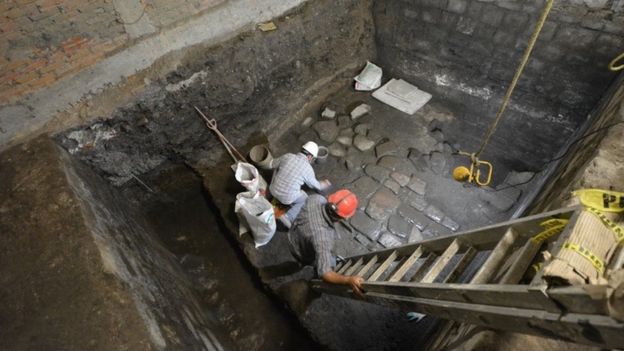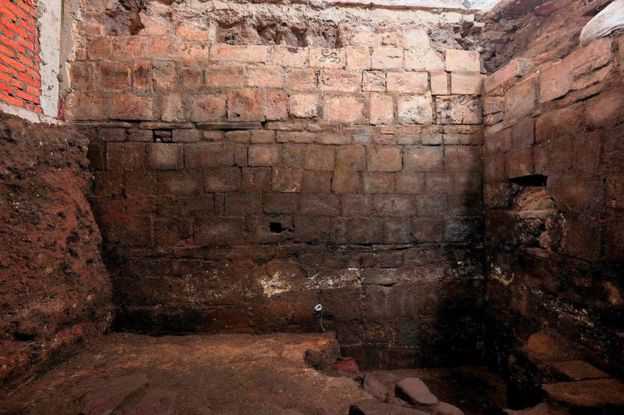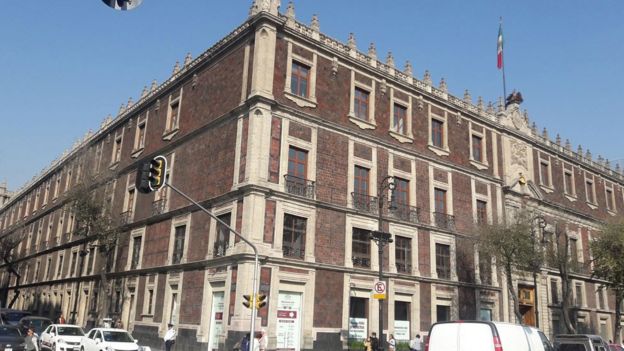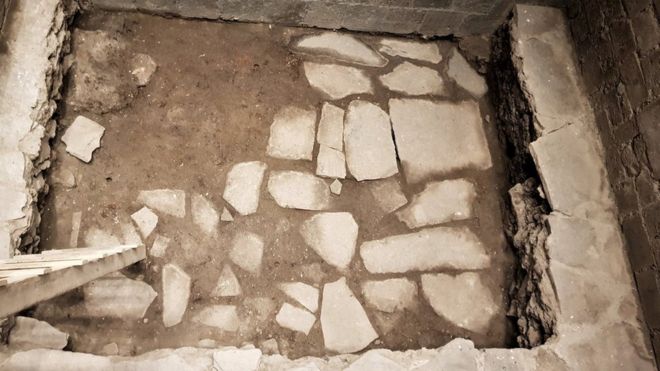The remains of an ancient Aztec palace have been discovered under a stately building in Mexico City.
During renovations at the building off the capital’s central Zócalo plaza, workers found basalt slab floors.
The floors were part of an open space in the palace of Aztec ruler Axayácatl, Mexico’s National Institute of Anthropology and History (INAH) said.
The palace was also used as the home of Spanish conquistador Hernán Cortés after the fall of the Aztec empire.
Excavators have found evidence of the home Cortés had at the palace site.
Archaeologists say it is likely to have reused materials from Axayácatl’s palace – which, like other sacred Aztec buildings, was razed by the Spanish conquistadors.

Axayácatl reigned between 1469 and 1481 and was the father of Montezuma, one of the empire’s last rulers.
“Below the subflooring of the house of Cortés, more than three metres deep, the remains of another floor of basalt slabs, but from pre-Hispanic times, were detected,” INAH said.
“Given its characteristics, the specialists deduced that it was part of an open space in the former palace of Axayácatl, probably a courtyard.”


Cortés arrived in what is now Mexico in 1518 as commander of a mission to explore the region – rumoured among Europeans to hold great wealth – for Spanish colonisation.
He and his men laid siege to the Aztec capital Tenochtitlán in 1521. When the city surrendered, the Spanish colonisers destroyed it.
The building which stands on the site now – the Nacional Monte de Piedad – is a historic pawnshop that was built in 1755.

